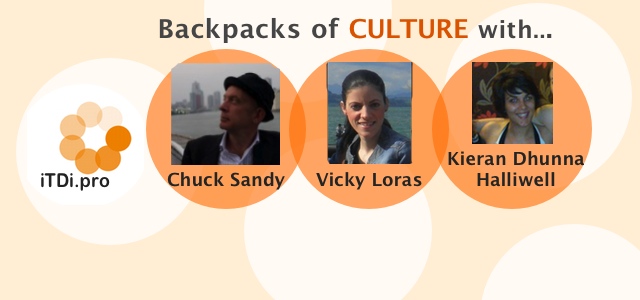
Cultural Exploration in Soi 70-2
– Chuck Sandy
 I’m sitting by the Chao Phraya river outside a house in the Bangplad area of Bangkok, Thailand where I’ve rented a room for a month. Behind me is Soi 70-2, a local neighborhood built on canals and swampland. Getting to this house, or anywhere else in the Soi, means walking along very narrow concrete paths lined closely on both sides by mostly one-story houses. Everyone has their doors and windows open, and I can’t help looking inside. That’s because I’m an outsider here – one who knows nothing about Thai culture except what I’ve read in books — so looking is what I do to learn. I look, I interpret, I ask around, and I make mistakes.
I’m sitting by the Chao Phraya river outside a house in the Bangplad area of Bangkok, Thailand where I’ve rented a room for a month. Behind me is Soi 70-2, a local neighborhood built on canals and swampland. Getting to this house, or anywhere else in the Soi, means walking along very narrow concrete paths lined closely on both sides by mostly one-story houses. Everyone has their doors and windows open, and I can’t help looking inside. That’s because I’m an outsider here – one who knows nothing about Thai culture except what I’ve read in books — so looking is what I do to learn. I look, I interpret, I ask around, and I make mistakes.
It didn’t take long to see that some houses here are also stores selling goods and supplies. A few sell only a single item like eggs, water, sweets, bananas or cakes. Some provide services. Then, there are houses out of which women, mostly, prepare and sell homemade food like curries, soups, and vegetable dishes right out of their kitchens. At first, it seemed like everyone was selling something.

The other day, I saw two women sitting on a front porch surrounded by pots full of delicious looking foods. I smiled, got some money out, and pointed to two dishes I’d decided to try. “No, no, no, no” these ladies indicated with their gestures, and though at first I thought they might be letting me know that these were things I wouldn’t like, I soon realized this wasn’t a store at all. I was trying to buy someone’s dinner.
As I walk the pathways of this Soi, I carry with me all I know and am. This is to say, I carry the version of American culture I grew up in, the values of the family I grew up with, combined with the Japanese culture I’ve grown into after more than twenty years of living in Japan. Still, having traveled the world quite widely and having lived in many places, I consider myself cross-culturally sensitive. I’ve even taken classes on culture, read all of Edward T. Hall’s books about culture, and taught courses on cross-cultural understanding. Yet, I repeatedly get it wrong.
That’s because wherever I go, there I am: a prisoner of my own background, constantly needing to be reminded that culture is not one thing, but many things, and always something understood through the inaccurate eyes of the self. I keep forgetting this. No matter how aware one may be, culture is difficult to get a handle on.

Let’s try an experiment, one you can do with your students in class if you’d like. Wherever you live, get a notebook, go out in a local neighborhood, and look around. If you’re not surrounded by a different culture, pretend you are. Look carefully and make some notes on the things you see. Then, when you get back home, write out possible interpretations based on the observations you made. Here’s an example:
| Culture Chart > Location: Soi 70-2, Bangkok, Thailand | |
| Observations | Interpretations |
| No matter when I pass by one house in the Soi, the family living there is sitting on the floor around a low table, eating & talking | 1) Meals don’t take place at regular times. 2) Families sit on the floor when they eat. 2) Thai families enjoy spending time together. |
| The shallow water between houses near the river is full of trash. No one seems to mind. Only a few people pick up, collect & bag trash. | 1) Litter doesn’t bother people. 2) Trash washes in from the river & residents have gotten used to it. 3) Recycling is not important here.. |
| One lady sells supplies from her kitchen. There’s no need to pay at the time of purchase. She keeps a ledger of names and amounts. People pay later. | 1) Community is much more important than money. 2) People know and trust each other. 3) People don’t carry much money when they go out. |
| Some people place cut limes, salt, and chili peppers along the side of the path in front of their homes. They do so every morning. | 1) This has religious significance. 2) It’s done to keep insects, mice, and snakes away. 3) It’s a kind of decoration but without deep meaning. |
When I’ve done this activity with Japanese university students in Japan, they always return with some interesting observations from their own neighborhoods. They also almost always arrive believing the interpretations they’ve made are explanations. They’re Japanese interpreting their own culture. How could they be wrong?
Yet, they often are wrong, and they discover this as they work in groups to share and discuss their observations. That’s when they discover that there’s usually some disagreement, different opinions, and other points of view among their classmates. Although they begin sharing their interpretations as the answer, they soon find that what they really have is an answer. Realizing this is eye opening for everyone as they learn that even in a supposed monoculture, culture is not clear-cut and singular at all. There are many different ways of doing things, many different family traditions informing rituals, lots of variations in behaviors across neighborhoods and regions, and few easy answers or uniformly agreed upon interpretations.
Doing this activity with students several times over a course — focusing one time on holidays, for example, and another time on the rituals and behaviors surrounding food, for instance — is one way of helping students understand that there are few cultural universals. It helps students see that culture is living and various, and that the understanding we have of even our own culture is one formed by a self who’s been shaped by family, background, and experience — and is therefore singular and unreliable.
Our observations about culture and our interpretations of the things we observe in a culture are an extension of who we are. Ask around. No one’s got the answer to what culture is and why people do the things they do. Most people, though, have an answer, and they’re usually happy to present it as fact.

Back in Soi 70-2 , I’m learning this again, having already discovered from one Thai informant that the people who spread limes, salt and chili in front of their houses are doing so to keep snakes away. A long-term foreign neighbor asked his Thai wife about this and she told him it’s a Buddhist thing. My current landlord told me it’s done to protect a house from unwelcome spirits, and the Thai lady at the local store who gives everyone credit said it’s to keep ants out. Who’s right? Not everyone.
That’s why I’ll be asking around, observing and interpreting, working to remember that culture in Soi 72-2 is like culture everywhere: not a puzzle to be solved, but rather something to be explored — and enjoyed.
~~~~~~~~~~~~~~~~~~~~~~~~~~~~~~~~~~~~~~~~~~~~~~~~~~~~~~~~~~~~~~~~~~~~~~~~~~~~
Connect with Chuck and other iTDi Associates, Mentors, and Faculty by joining iTDi Community. Sign Up For A Free iTDi Account to create your profile and get immediate access to our social forums and trial lessons from our English For Teachers and Teacher Development courses.




 If I ask you, some of you descend from one, two, perhaps more cultures, or know someone who is bicultural, multicultural. Your class as a total can be a multicultural hub, buzzing with countries, languages and various traditions and customs. It could be monocultural as well, which is also fine.
If I ask you, some of you descend from one, two, perhaps more cultures, or know someone who is bicultural, multicultural. Your class as a total can be a multicultural hub, buzzing with countries, languages and various traditions and customs. It could be monocultural as well, which is also fine.



 It was exploratory; a foot in the water for me, to see what children’s understanding of the world around them was. I was a new member of staff in a new area with no real plan for how the project would work, but despite this my new Head Teacher took a risk and allowed Culture Chat to go ahead! When the project began, I was nervous. I worried about what people would think. I worried I’d be laughed at. Most of all, I worried people wouldn’t want to talk openly about perspectives of the world. The atmosphere in Britain over the last 12 months has become less welcoming to foreigners, peaking over summer when the government backed a scheme of ‘Go Home’ vans being driven across London. The media regularly sensationalise reporting, but particularly in crimes relating to any ethnic minorities, which is resulting in a lack of tolerance, a divide, misconceptions and misunderstandings to seep into the public consciousness.
It was exploratory; a foot in the water for me, to see what children’s understanding of the world around them was. I was a new member of staff in a new area with no real plan for how the project would work, but despite this my new Head Teacher took a risk and allowed Culture Chat to go ahead! When the project began, I was nervous. I worried about what people would think. I worried I’d be laughed at. Most of all, I worried people wouldn’t want to talk openly about perspectives of the world. The atmosphere in Britain over the last 12 months has become less welcoming to foreigners, peaking over summer when the government backed a scheme of ‘Go Home’ vans being driven across London. The media regularly sensationalise reporting, but particularly in crimes relating to any ethnic minorities, which is resulting in a lack of tolerance, a divide, misconceptions and misunderstandings to seep into the public consciousness. It is forty one years since John Lennon wrote the renowned song ‘Imagine’. In it, he refers to a world without war, where people are equal with no religion or countries and the world lives in peace. How much has changed since this song?
It is forty one years since John Lennon wrote the renowned song ‘Imagine’. In it, he refers to a world without war, where people are equal with no religion or countries and the world lives in peace. How much has changed since this song?
